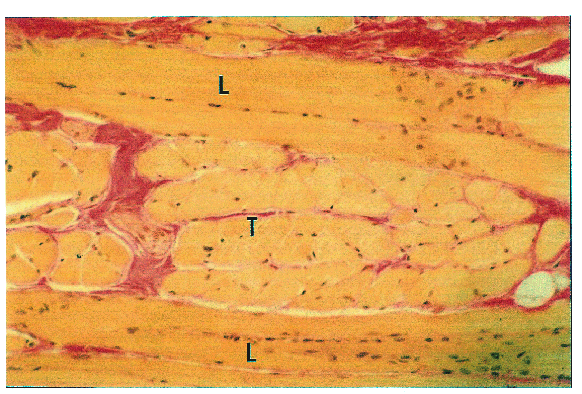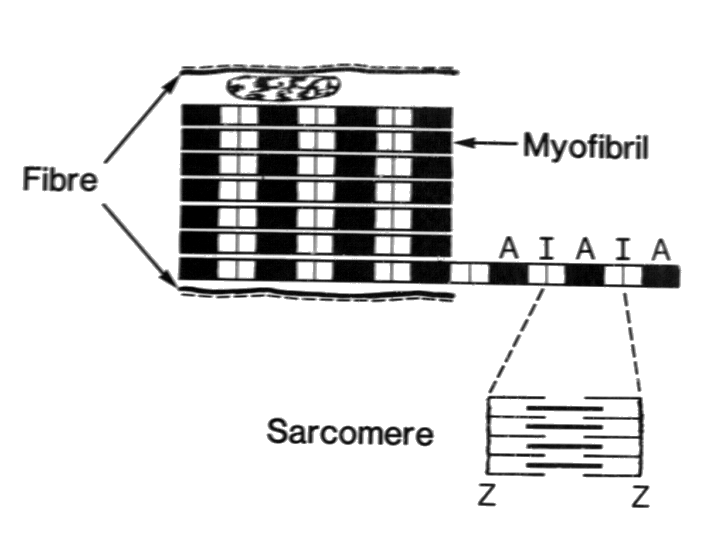UL1.H1.5 +D1 Skeletal Muscle Organisation
Skeletal Muscle Organisation:
- Skeletal muscle cells are held together in bundles by connective tissue
- Connective tissue also forms an intermediary between the muscle cell and the structures which will be affected by the contraction of the muscle cell
- eg. Muscles which act across joints are connected to the bones by connective tissue in the form of tendons
- The power that is generated by a muscle is determined by the number of sarcomeres which are found within the cells which make up the muscle
- The amount of movement which can be generated is determined in part by the length of individual muscle cells (ie the number of sarcomeres laid end to end in the myofibrils) and the orientation of the muscle cells in relation to the line of pull of the muscle
- Skeletal muscle cells may be organised in a circular arrangement around a space
- When the muscle cells contract, the diameter of the space is reduced eg anal sphincter
Skeletal Muscle Organisation:
- In this section some cells (L) are cut in long section, some cells (T) are cut in transverse section
- The different orientation of muscle cells in the tongue allows the tongue to be moved in a wide range of directions
- The orientation of muscle cells within a muscle is important in determining the effects of the contraction of the individual muscle cells

Skeletal muscle cells in the tongue

